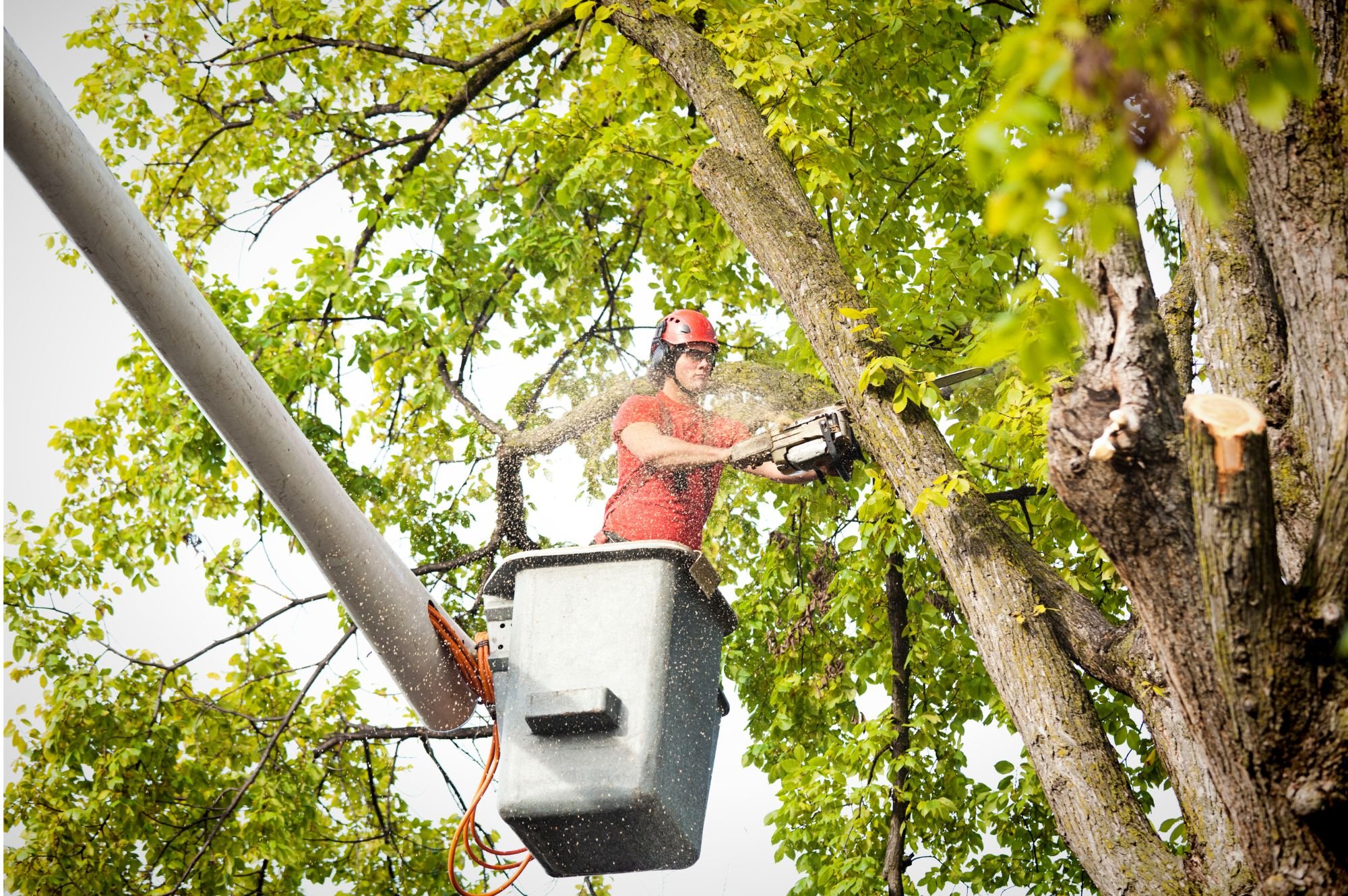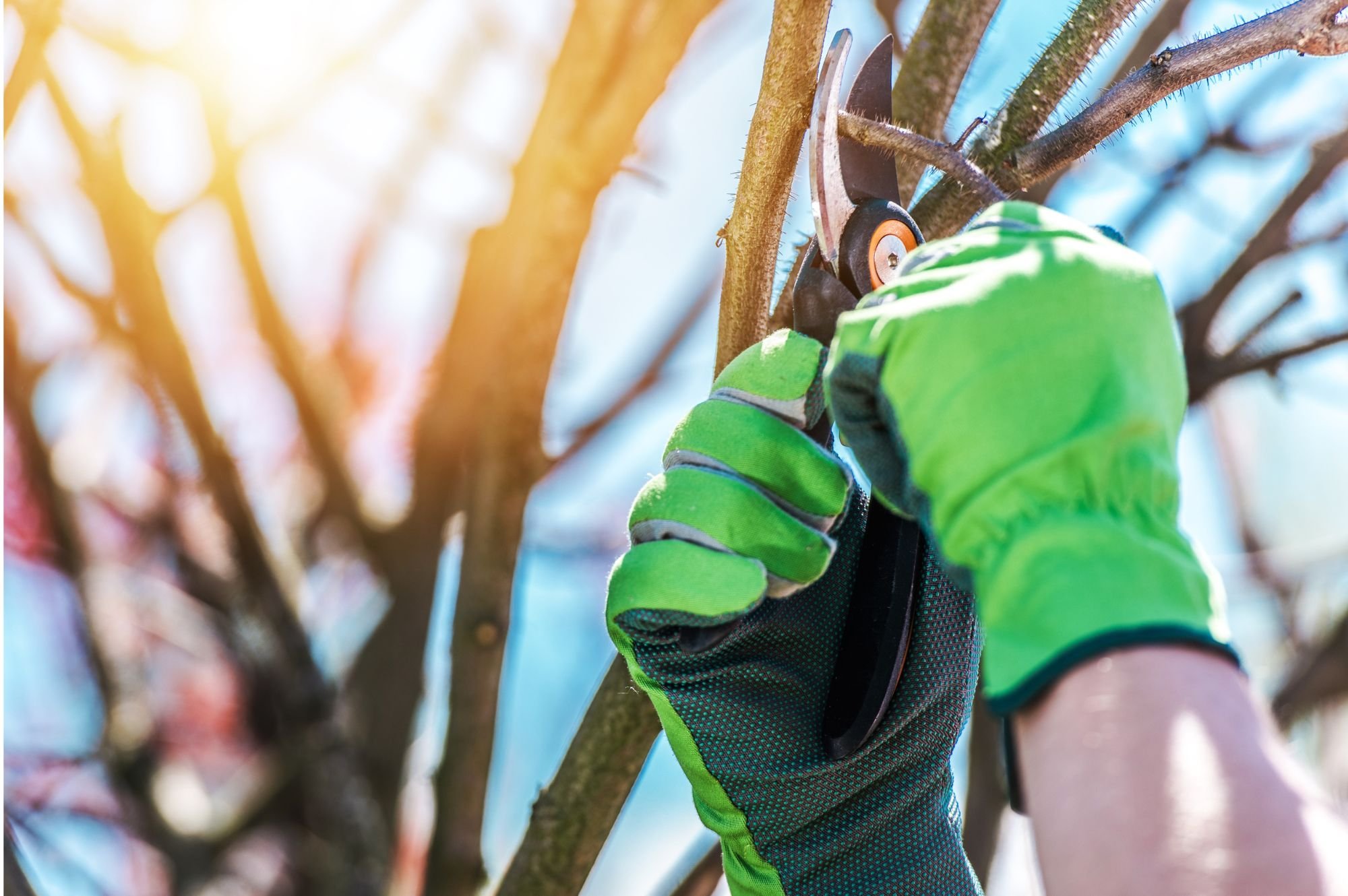What is the Proper Way to Trim a Tree?
/Tree trimming isn't just about appearances - it's an important part of tree care.
It promotes the overall health and longevity of trees, but using the right techniques ensures that trees remain healthy and no one gets hurt in the process.
While DIY trimming may seem tempting, it can be a complicated task with potential risks. Sometimes, it’s best to leave it to the professionals.
To help you make a more informed decision about your tree trimming needs, keep reading to learn more about techniques and considerations:
The Best Tree-Trimming Techniques
Different trimming techniques serve various purposes, addressing concerns such as tree health, aesthetics, and structural integrity.
Understanding these techniques allows for tailored tree care approaches to meet specific needs and objectives:
Remove Dead or Diseased Branches
Removing dead or diseased branches from trees is essential for their health, preventing the spread of disease and improving overall vitality.
Promptly addressing these issues enhances the tree's appearance and reduces the risk of safety hazards.
Trim Crossing or Rubbing Limbs
Trimming crossing or rubbing limbs promotes proper airflow within the tree canopy, reducing the likelihood of damage from friction and improving aesthetic appeal.
This practice encourages healthier growth and minimizes the risk of disease or pest infestation.
Balanced Canopy
Maintaining a balanced canopy through trimming ensures even distribution of weight and sunlight, reducing the risk of branch failure and promoting overall tree stability.
By removing excess growth, you encourage stronger, more resilient branches and a visually pleasing tree silhouette.
Natural Shape of Tree
Respecting the natural shape of the tree during trimming preserves its inherent beauty and enhances its ability to thrive in its environment.
Avoiding drastic alterations helps maintain the tree's structural integrity and support its long-term health and resilience.
Remove Suckers or Water Sprouts
Regularly removing suckers or water sprouts redirects the tree's energy towards healthier growth, promoting a more robust canopy and overall tree vitality.
Eliminating these fast-growing shoots prevents competition for resources and maintains the tree's structural integrity.
Growth Patterns and Potential Hazards
Understanding the tree's growth patterns allows for strategic trimming to mitigate potential hazards such as overhanging branches or weak attachments.
Identifying and addressing these risks enhances safety, prolongs the tree's lifespan, and preserves its natural beauty.
Tree Trimming Equipment
Tree trimming requires the use of specific tools to ensure safe and effective results.
Essential equipment includes pruning shears for smaller branches, loppers for thicker branches, and pruning saws for larger limbs.
Pole pruners and extendable saws are also necessary for reaching higher branches safely.
Safety gear such as gloves, helmets, and goggles should always be worn to protect against potential hazards during tree trimming operations.
What Part of the Tree Shouldn’t Be Cut?
During tree trimming, certain parts should be avoided to ensure the tree's health and longevity.
One critical area to avoid cutting is the branch collar. The branch collar is the swollen area at the base of a branch where it meets the trunk, containing specialized tissues crucial for proper wound healing and defense against pathogens.
Cutting into this region can impede the tree's ability to heal properly, leading to potential decay and disease.
It’s also important not to remove more than 25% of the tree's foliage in a single season, as excessive pruning can stress the tree and compromise its overall well-being.
By respecting these guidelines, tree trimming can effectively enhance the tree's appearance and vitality while minimizing the risk of harm.
What Month is Best to Trim Trees?
Timing is crucial when trimming trees, as it can impact the tree's health, growth, and resilience.
Choosing the right month ensures minimal stress on the tree and maximizes its regrowth potential:
Late Winter to Early Spring
Late winter to early spring, when trees are dormant, is an ideal time for trimming as it promotes new growth without causing undue stress on the tree.
Trimming during this period also allows for better visibility of the tree's structure, facilitating more precise cuts and shaping.
After Blooming
For flowering trees, waiting until after blooming ensures minimal disruption to the next season's blossoms, preserving their beauty and maximizing regrowth potential.
Trimming after blooming also allows for the removal of dead or damaged branches without compromising the tree's ability to produce flowers and fruits.
Trimming vs Pruning: What’s the Difference?
Differentiating between trimming and pruning is essential as each serves distinct purposes in tree maintenance.
Knowing when to employ each technique ensures effective tree care practices without compromising the tree's well-being:
Trimming
Trimming involves selectively removing branches to maintain the tree's shape and appearance. It is typically done for aesthetic purposes or to remove dead or overgrown branches.
To minimize stress on trees, trim them when they are dormant, from late winter to early spring.
Trimming should not be done during periods of active growth, such as late spring and summer, as it can disrupt the tree's growth patterns and lead to excessive stress.
Pruning
Pruning, on the other hand, is a more strategic process aimed at improving the tree's structure, health, or fruit production. It involves removing specific branches to promote better airflow, light penetration, and overall tree vigor.
Pruning is best done during the dormant season, like trimming, to minimize stress on the tree.
However, pruning should not be done during extreme weather conditions, such as during periods of drought or frost, as it can further stress the tree and impede its ability to recover.
Professional Tree Trimming in Lloydminster
Tree trimming is no small task—it's vital to maintaining the health and beauty of your trees while safeguarding your property.
But without the right tools and experience, it is not a task you should attempt to do on your own.
For expert assistance tailored to your tree care needs, don't hesitate to reach out to Marksmen Vegetation Management.
Contact us today for professional and reliable tree-trimming services in Lloydminster.






